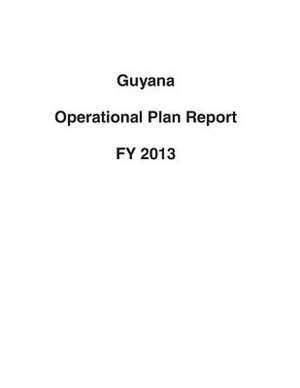Guyana Operational Plan Report Fy 2013
Autor United States Department of Stateen Limba Engleză Paperback
Preț: 134.39 lei
Nou
Puncte Express: 202
Preț estimativ în valută:
25.72€ • 26.78$ • 21.74£
25.72€ • 26.78$ • 21.74£
Carte disponibilă
Livrare economică 17 februarie-03 martie
Preluare comenzi: 021 569.72.76
Specificații
ISBN-13: 9781503193659
ISBN-10: 1503193659
Pagini: 146
Dimensiuni: 216 x 279 x 8 mm
Greutate: 0.35 kg
Editura: CREATESPACE
ISBN-10: 1503193659
Pagini: 146
Dimensiuni: 216 x 279 x 8 mm
Greutate: 0.35 kg
Editura: CREATESPACE
